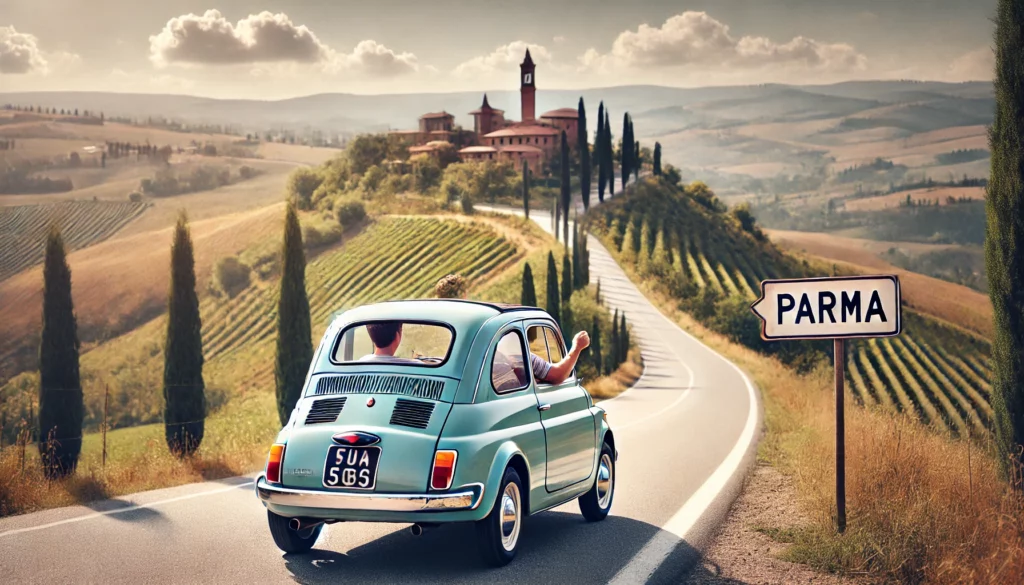
Parma, the heart of Italy’s Emilia-Romagna region, is renowned for its culinary heritage. For food enthusiasts looking to explore the rich flavors of Parmigiano Reggiano, Traditional Balsamic Vinegar, and Lambrusco wines, an easy day trip from Parma can be highly rewarding. Three key stops on this culinary journey are Consorzio Produttori Latte (CPL), Latteria Sociale Paverazzi, and Medici Ermete. These locations offer a deep dive into the art of cheese-making, the secrets of traditional balsamic vinegar, and the rich heritage of local wines.
1. Consorzio Produttori Latte (CPL) – The Cheese Tradition
Established in 1933, Consorzio Produttori Latte (CPL) is a cooperative near Parma specializing in Parmigiano Reggiano. Parmigiano Reggiano is famous worldwide for its distinct, nutty flavor and granular texture, qualities that emerge from careful production methods and strict regulations
CPL Parma. At CPL, you can witness the process from start to finish, with insights into how the local milk is transformed into cheese using traditional techniques that have been passed down for generations.
CPL collaborates with various local farms to ensure high-quality milk, which is key to their cheese’s reputation. During a tour, visitors can explore the sala di stagionatura, or aging room, where wheels of Parmigiano Reggiano are stacked in towering rows. The minimum aging period here is 12 months, but CPL also produces more aged varieties that develop a richer, more complex flavor. Tastings are a highlight of the visit, allowing guests to appreciate the differences between various ages of Parmigiano Reggiano CPL Parma
2. Latteria Sociale Paverazzi – In the Cradle of Parmigiano Reggiano
Not far from CPL lies Latteria Sociale Paverazzi, a cheese factory with a history dating back to 1921. Bibbiano, where Paverazzi is located, is often called the “Cradle of Parmigiano Reggiano.” This area boasts fertile lands and ideal conditions for dairy farming, making it perfect for producing Parmigiano Reggiano Emilia Romagna Tourism.
At Paverazzi, visitors can explore the cheese-making process, which remains largely unchanged from ancient practices. Here, the milk is collected daily from local cows, primarily of the Reggiana breed, known for their high-quality milk. Visitors can observe the intricate steps involved in making Parmigiano Reggiano, from curdling the milk to placing it in molds and finally aging it in controlled conditions. Paverazzi is dedicated to preserving the authenticity of its product, adhering to strict standards to ensure each wheel of cheese is as flavorful as the next Paverazzi.
A visit to Paverazzi also includes tastings, where you can try Parmigiano Reggiano of different ages and discover the nuanced flavors that develop over time. The Paverazzi store also offers an array of local products to take home, making it an ideal stop for food lovers seeking authentic flavors from the region.
3. Medici Ermete – The Art of Balsamic Vinegar and Lambrusco
Rounding out the food tour is a visit to Medici Ermete, located a short drive from Parma in the lush countryside of Reggio Emilia. Known for its high-quality Lambrusco wines, Medici Ermete also produces Traditional Balsamic Vinegar of Reggio Emilia. This family-run business has a rich history dating back to the 19th century and is dedicated to sustainable farming and organic production Emilia Food Valley.
Medici Ermete offers guided tours that provide a window into the production of both wine and balsamic vinegar. The tour begins in the vineyards, where visitors can learn about the cultivation of Lambrusco grapes. The real magic happens in the acetaia, or vinegar loft, where balsamic vinegar is aged in barrels of different woods, each imparting its unique flavor characteristics to the vinegar. The aging process for traditional balsamic vinegar can last from 12 years to several decades, and each batch reflects the careful craftsmanship and patience required to create this delicacy Medici Ermete.
In the tasting room, guests can sample various types of Lambrusco, ranging from dry to sweet, alongside aged balsamic vinegar. The Medici family’s passion for their products is evident in every detail, from the careful curation of their vineyard to the meticulous aging of their vinegar. The tour also includes a visit to their wine museum, where historical tools and artifacts are displayed, giving context to the region’s long-standing traditions.
Making the Most of Your Food Tour
A day trip from Parma to CPL, Paverazzi, and Medici Ermete is a feast for the senses and a journey through some of the most cherished culinary traditions of Emilia-Romagna. Each stop offers a distinct experience, yet together, they provide a comprehensive look at the region’s specialties. To get the most out of your tour:
- Book in Advance: Tours at CPL, Paverazzi, and Medici Ermete often require reservations. Check each location’s website or contact them directly to secure your spot.
- Plan for Tastings: Tastings are a highlight of each visit, so make sure to leave room in your schedule (and your stomach!) to fully enjoy them. Consider bringing a cooler or insulated bag to keep any cheese or vinegar purchases fresh.
- Explore Local Pairings: Each location offers a unique opportunity to try local specialties. Pairing Parmigiano Reggiano with Lambrusco and balsamic vinegar is a classic combination that showcases the region’s flavors.
- Immerse in the Culture: Beyond the food, each stop offers a glimpse into the cultural heritage of Emilia-Romagna. Take time to ask questions, explore the museums, and learn about the history behind these renowned products.
By the end of your day, you’ll have gained a deeper appreciation for the craftsmanship and dedication that go into every wheel of Parmigiano Reggiano, every bottle of Lambrusco, and every drop of balsamic vinegar. This easy tour out of Parma is more than just a culinary adventure; it’s an exploration of the traditions that define the heart of Italian cuisine.

